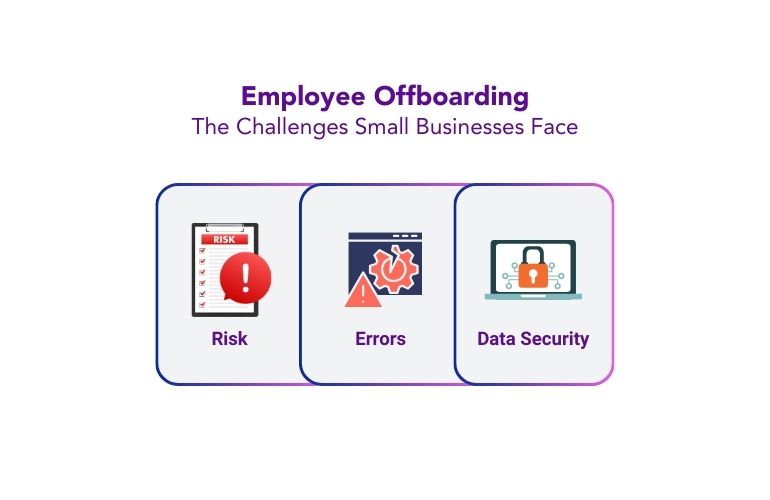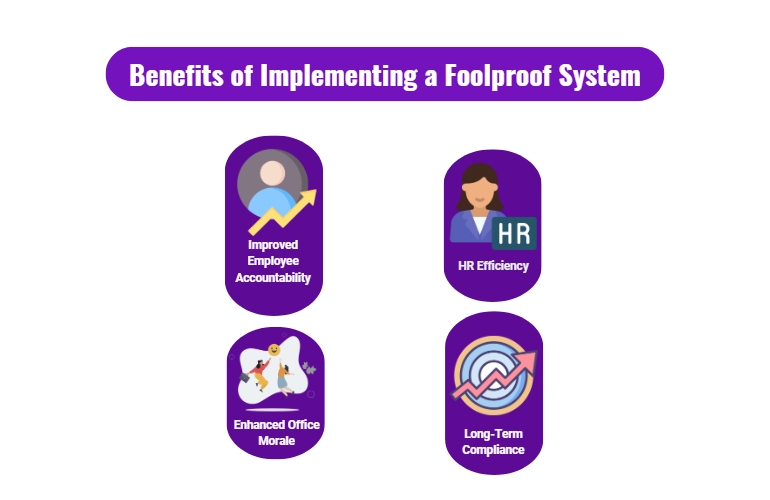Small and medium-sized businesses (SMBs) in India are increasingly recognizing the need to leverage technology to remain competitive in the hyper-paced B2B world. With 2025 fast approaching, HR challenges are growing more complex, and manual processes can no longer keep up with the demands of modern business. This is where HRMS (Human Resource Management Software) comes into play.
For SMBs looking to streamline operations, reduce administrative workload, and stay compliant with evolving labor laws, adopting HRMS solutions is no longer a luxury but a necessity. HRMS systems not only automate core HR functions but also offer features that support better decision-making, compliance management, and employee engagement. In this blog, we will explore the most common HR challenges faced by small businesses and how HRMS can provide the perfect solution.
The Growing HR Challenges for Small Businesses in 2025
Employee Offboarding: A Critical but Overlooked Process
Employee offboarding is an often-neglected process in many small businesses, yet it holds critical importance. Traditional, manual offboarding systems are prone to errors, inconsistencies, and data security risks. Without an automated process, businesses struggle to track key steps such as exit interviews, asset returns, and final pay settlements. The absence of clear offboarding protocols can also lead to dissatisfied former employees, poor company reviews, and potential data security breaches.
The lack of standardized, automated offboarding processes can lead to compliance risks, and potential legal issues, and compromise the integrity of company data.
Compliance Management: The Growing Complexity
Another significant challenge facing SMBs is keeping up with the constantly changing landscape of labor laws, tax regulations, and compliance requirements. The risk of non-compliance is high, especially in tier 2 and tier 3 cities. Where small businesses may not have access to dedicated HR teams or legal advisors.
Key Pain Point: Non-compliance can result in hefty fines, penalties, or legal issues. Posing a major threat to the long-term sustainability of small businesses.
With these challenges mounting, many SMBs are turning to HRMS solutions as a way to automate and simplify their HR processes.
How HRMS Can Address Offboarding Challenges
HRMS systems provide a seamless, automated offboarding process that reduces errors and ensures consistency in the transition phase. From exit interviews to returning company property, automated HRMS platform manage every aspect of the offboarding cycle.
- Automated Offboarding Process: With HRMS, businesses can set up automated workflows for employee exits, ensuring that all steps-like exit interviews, asset return, and final payments-are tracked and completed on time. This eliminates the need for manual follow-ups and reduces the administrative burden on HR teams.
- Improved Data Security: One of the major concerns during offboarding is safeguarding sensitive employee data. HRMS platforms help ensure that all personal and payroll information is securely stored and that access is restricted. By keeping a secure, digital record of employee data, HRMS protects against potential leaks and compliance risks associated with mishandling of personal information.
Case Study Example: A small manufacturing firm in India saw a significant reduction in offboarding-related errors after implementing an HRMS solution. The system streamlined asset recovery, ensured timely payouts, and enhanced security protocols, leading to a smoother transition and improved employee satisfaction.
How HRMS Simplifies Compliance Management
Keeping track of compliance-related tasks can be overwhelming for small businesses, especially when dealing with ever-changing tax laws, labor regulations, and employee rights. HRMS systems are equipped with real-time compliance tracking and automation features that help SMBs stay ahead of legal requirements.
- Real-Time Compliance Tracking: HRMS software can automatically track changes in labor laws, tax rates, and other regulations, ensuring that your business remains compliant with local, state, and national requirements. By offering a centralized platform for compliance management, HRMS reduces the risk of oversight and ensures that SMBs stay on top of important updates.
- Automated Alerts for Compliance Deadlines: HRMS tools offer automated alerts for important deadlines, such as tax filing dates or the expiration of compliance documents. These reminders allow HR teams to focus on other tasks while ensuring that compliance-related actions are taken in a timely manner.
- Centralized Documentation Management: HRMS systems provide a centralized repository for storing and managing important compliance-related documents, such as employee contracts, tax filings, and audit reports. This makes it easier to prepare for audits and reduces the risk of losing critical documents during the compliance process.
Example: A small tech startup in Bangalore implemented HRMS to manage employee contracts and payroll compliance. The software automatically alerted the HR team when tax filings were due, helping the business avoid penalties and reducing the time spent on manual record-keeping.
Additional Benefits of HRMS for SMBs in 2025
Beyond streamlining offboarding and compliance processes, HRMS offers additional benefits that are particularly valuable for SMBs looking to improve efficiency and reduce administrative costs.
Employee Self-Service (ESS) Portal
HRMS platforms typically come with an Employee Self-Service (ESS) portal, which allows employees to manage their own personal information, request time off, view payroll data, and access benefits. This reduces HR administrative workload and gives employees more control over their HR-related tasks.
Payroll Management and Automation
Payroll management can be an extremely time-consuming task, especially for small businesses that handle payroll manually. HRMS platforms automate the payroll process, reducing errors and ensuring timely salary disbursements. Automated payroll systems also ensure compliance with tax laws, helping businesses avoid penalties for incorrect tax filings.
Performance and Attendance Management
HRMS software helps businesses track employee performance and attendance seamlessly. By using digital tools to evaluate productivity and monitor work hours, businesses can make better decisions regarding promotions, raises, and workforce optimization. This also eliminates the risk of human error associated with manual attendance tracking.
Why SMBs Should Prioritize HRMS Adoption in 2025
As small businesses grow, so does the complexity of managing HR processes. Adopting an HRMS solution in 2025 will help SMBs manage their HR functions more efficiently and cost-effectively.
- Cost-Efficiency: Cloud-based HRMS solutions are affordable for small businesses, allowing them to reduce the cost of hiring additional HR staff. These solutions scale with the business, offering flexibility to meet changing needs as the company grows.
- Scalability: As small businesses expand, their HR needs grow more complex. HRMS platforms are scalable, offering more advanced features as your company’s workforce increases.
- Data-Driven Decision-Making: HRMS systems provide valuable insights into employee performance, payroll, and recruitment data. By analyzing this data, businesses can make informed decisions that improve hiring, retention, and overall productivity.
Conclusion
The challenges facing small businesses in 2025—such as employee offboarding, compliance management, and the need for efficient HR systems—are significant. Fortunately, HRMS solutions offer automated processes that reduce manual work, improve data security, and enhance compliance. For SMBs, the transition to an HRMS system is not just about technology adoption but about future-proofing your business for growth.
Small businesses should prioritize HRMS adoption as they prepare for the opportunities and challenges of 2025. If you’re ready to streamline your HR operations, ConfluxHR can help guide you through selecting and implementing the right HRMS solution for your business needs.















